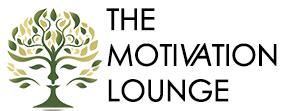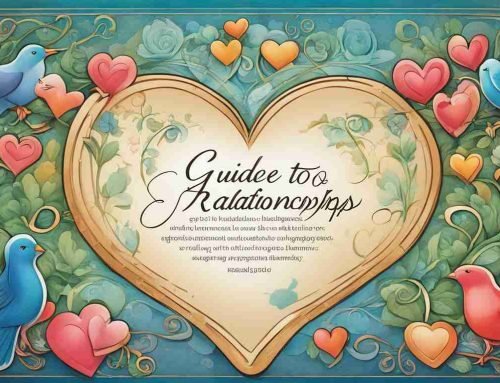Effective communication is an essential skill that can unlock success in both professional and personal relationships. It is through effective communication that we can express ourselves clearly, understand others better, build trust, and foster positive interactions. Developing strong communication skills requires a willingness to learn, practice, and utilize various strategies and techniques to improve our communication abilities.
Key Takeaways:
- Effective communication is crucial in achieving success in professional and personal relationships
- Improving communication skills requires utilizing various strategies and techniques
- Practicing active listening, non-verbal cues, and clear verbal and written communication are fundamental principles of effective communication
The Foundations of Effective Communication
Effective communication is essential in both personal and professional relationships. Communication strategies, methods, and techniques form the basis for effective communication skills. Communication skills are the key to building successful relationships with clients, colleagues, and loved ones.
The foundations of effective communication include clarity, active listening, and non-verbal cues. Clear communication techniques involve using language that is concise and understandable, avoiding jargon or overly technical terms. Active listening involves giving your full attention to the person speaking, without interrupting or formulating a response before they have finished speaking. Non-verbal cues, such as body language and tone of voice, also play an essential role in effective communication.
The Importance of Clear Communication Techniques
Clear communication techniques involve using language that is concise, appropriate, and easy to understand. Effective communication methods ensure that the intended message is conveyed as accurately as possible. Using clear communication techniques can reduce the risk of misunderstandings, which can harm professional and personal relationships. Effective communication skills involve selecting the words and tone that are tailored to the audience’s level of understanding.
The Significance of Active Listening
Active listening is the art of paying attention to the person speaking without interrupting or formulating a response before they have finished speaking. Active listening is an essential element of effective communication as it ensures that the speaker’s intended message is understood accurately. Active listening techniques include paraphrasing, reflecting, and asking clarifying questions. Using active listening techniques can make the speaker feel heard and understood, fostering successful communication.
Utilizing clear communication techniques and active listening skills form the foundation for effective communication methods, leading to improved communication skills. When implemented, these techniques can lead to successful communication strategies in both personal and professional relationships.
Verbal Communication Strategies
Improving verbal communication is an essential aspect of effective communication. The right words, tone, and voice modulation can make a significant impact on how the message is received. Here are some effective communication techniques that can help improve verbal communication skills:
- Choose your words carefully: The words you use can affect the message’s clarity and tone. Use words that are easy to understand, appropriate to the audience, and convey what you intend to say.
- Speak clearly and confidently: Your voice matters when it comes to verbal communication. Speak clearly, confidently, and with the right tone to make your message impactful.
- Practice active listening: Listening is an essential aspect of verbal communication. Practice active listening by paying attention to the speaker, asking clarifying questions, and giving feedback. This will help to avoid misunderstandings and build trust.
- Use voice modulation: Voice modulation involves changing the pitch, tone, and volume of your voice to convey different emotions and intentions. Use the right voice modulation to emphasize important points and keep the audience engaged.
- Be aware of nonverbal cues: Verbal communication is not just about the words you use but also the nonverbal cues you give. Pay attention to your body language, facial expressions, and gestures to ensure they align with what you are saying.
- Keep it concise: Avoid using unnecessary words or phrases that might dilute the message’s impact. Get straight to the point and keep it concise.
By incorporating these techniques into your verbal communication, you can improve your communication skills and ensure that your message is clear, effective, and impactful.
Non-Verbal Communication Techniques
Effective communication is not just about the words we use but also about how we convey them. Non-verbal communication makes up a significant part of our communication, and thereby it is essential to learn the techniques of non-verbal communication to improve our communication skills.
The Importance of Body Language
Body language refers to the gestures, facial expressions, and postures that we use to convey messages. It is crucial to understand body language to improve communication skills effectively. Here are some techniques:
- Make eye contact- eye contact is an essential aspect of non-verbal communication, as it conveys confidence and interest. It is crucial to maintain appropriate eye contact while communicating with others.
- Use facial expressions- facial expressions play a vital role in conveying emotions and intentions during communication. Smile, nodding, and frowning are essential facial expressions that indicate agreement, understanding, or disagreement, respectively.
- Use gestures – Gestures such as pointing, waving, or handshaking are essential non-verbal signals that convey unique meanings during communication. Using the right gestures at the right time can improve the effectiveness of communication.
- Pay attention to posture – Posture such as slouching, standing too close, or touching others can affect non-verbal communication negatively. Maintaining an open and relaxed posture can help convey confidence and openness.
The Role of Tone and Pitch
The tone and pitch of our voice also play a significant role in non-verbal communication. Here are some techniques:
- Use tone for emphasis- tone can be used to emphasize a particular point, highlight a particular emotion or convey sarcasm or humor.
- Speak in a clear and audible voice- speaking in a clear and audible voice ensures that the message is conveyed effectively.
- Use pitch to convey meaning- raising or lowering the pitch of our voice can be used to convey meaning or indicate agreement or disagreement.
- Pausing- pausing at the right moment can help convey thoughtfulness and indicate that the speaker is taking time to think.
By paying attention to non-verbal communication, we can improve our communication skills significantly. By combining verbal communication with non-verbal cues, we can reach more meaningful, deeper connections, and convey our intended message effectively.
Written Communication Strategies
Effective written communication is essential in both professional and personal settings. It requires clear and concise language, appropriate tone, and effective structure. To improve your written communication skills, consider implementing the following strategies:
- Use clear and concise language: Avoid using complex words and phrases, and keep your writing simple and to the point.
- Structure your messages effectively: Use headings, bullet points, and numbered lists to break up your writing and make it easier to read and understand.
- Utilize appropriate tone and style: Consider the audience and purpose of your writing, and adapt your tone and style accordingly.
- Edit and proofread: Always review your writing carefully, checking for grammar and spelling errors, and ensuring your message is clear and coherent.
By following these strategies, you can enhance your written communication skills and convey your message clearly and effectively. Remember, effective communication is a skill that can be developed and refined over time. By committing to ongoing learning and improvement, you can unlock success in all areas of your life.
Overcoming Communication Barriers
Effective communication requires understanding and responsiveness from both parties involved. However, different barriers, such as cultural differences, language barriers, and emotional obstacles, can significantly impede the communicative process.
It’s important to recognize and address these barriers to ensure successful communication and avoid misunderstandings. Here are some successful communication strategies to overcome the barriers:
Cultural differences
Cultural differences can lead to different communication styles and interpretations of messages. Respect and understanding are crucial in overcoming these differences. Take time to learn about the cultural norms and values of the person you’re communicating with.
Adjust your language, tone, and approach accordingly to avoid misunderstandings. Be patient and open to feedback if your message is not being received as intended.
Language barriers
When communicating with someone who speaks a different language, it’s essential to find common ground and establish a shared language.
Use simple language and avoid idiomatic expressions and technical jargon. Speak slowly and clearly, and use visual aids when possible. Encourage the other person to ask questions and provide feedback to ensure mutual understanding.
Emotional obstacles
Strong emotions, such as fear, anger, or anxiety, can significantly impede effective communication. To overcome emotional obstacles, it’s important to create a safe and non-judgmental environment.
Be an active listener and acknowledge the other person’s feelings and concerns. Use “I” statements instead of “you” statements to avoid placing blame. Take regular breaks to deescalate emotions and return to the discussion with a clear and rational mind.
By addressing and overcoming these communication barriers, you can foster successful communication skills and build stronger relationships in both personal and professional settings.
Active Listening Techniques
Effective communication requires not only speaking but also active listening. Active listening means giving full attention to the speaker, understanding the message, and responding appropriately. Here are some techniques for improving your active listening skills:
- Paraphrasing: Repeat what the speaker said in your own words to ensure you understand their message. This also demonstrates that you are paying attention and validates their message.
- Reflecting: Reflect on the speaker’s feelings and emotions, not just the words. This shows empathy and helps build trust in the communication.
- Clarifying: Ask questions to clarify any confusion or misunderstandings. This shows that you care about understanding the message accurately and want to make sure you respond in the best way possible.
Active listening can improve the effectiveness of communication by reducing misunderstandings and building trust between the speaker and listener. Successful communication strategies depend on both parties being able to communicate and listen effectively.
Feedback and Constructive Criticism
Effective communication involves not only expressing oneself but also receiving feedback and constructive criticism. Feedback is an essential component of growth and improvement in both personal and professional relationships. The ability to give and receive feedback constructively is a hallmark of effective communication skills.
When providing feedback, it is essential to emphasize the positive aspects of the communication while also highlighting areas that need improvement. Constructive criticism should always be specific, clear, and delivered in a manner that is respectful and non-judgmental.
Receiving feedback can be challenging, especially when it includes criticism. However, being receptive and open-minded is crucial to improving communication skills. When receiving feedback, active listening, paraphrasing, and asking clarifying questions can help ensure that the feedback is fully understood and can be acted upon.
Constructive feedback is an opportunity for growth and improvement, and it should be embraced as such. Learning to give and receive feedback effectively is a critical component of successful communication strategies, and it can contribute significantly to achieving success in personal and professional relationships.
Communication in Conflict Resolution
Effective communication is crucial in resolving conflicts and reaching mutual agreements. Communication barriers such as misunderstandings, emotions, and different perspectives can create conflicts. However, with the right techniques, conflicts can be resolved constructively.
Active Listening: Active listening is the key to resolving conflicts. It helps in understanding the other person’s perspective, feelings, and needs. When actively listening, paraphrasing, reflecting, and asking clarifying questions can create a sense of understanding and empathy, which is essential to resolving conflicts.
Recognize and Acknowledge: Recognizing the conflict and acknowledging the emotions and concerns of each party involved is crucial. It can help to create a safe environment to discuss and find solutions for the issue at hand.
Focus on Solutions: Focusing on solutions rather than problems is a powerful conflict resolution technique. Brainstorming options and choosing the best solution to the problem can help build a positive relationship between the parties involved.
Be Open-Minded: Being open-minded and willing to consider different perspectives is key to conflict resolution. Being empathetic towards the other party’s concerns and needs can help find a mutually beneficial solution to the conflict.
By following these communication techniques, conflicts can be transformed into opportunities for growth. Effective communication during conflicts can lead to understanding, respect, and stronger relationships.
Conclusion
Effective communication is the foundation of success in all aspects of life. By implementing the strategies and techniques discussed in this article, you can improve your communication skills and enhance your personal and professional relationships.
Remember to focus on the foundations of effective communication, such as clarity, active listening, and non-verbal cues. Utilize verbal and written communication strategies to convey messages accurately, and overcome communication barriers to foster successful communication.
Active listening and feedback are critical components of successful communication, as they promote understanding and growth. In conflict resolution, effective communication techniques prove invaluable to manage conflicts and reach resolutions.
With dedication and effort, you can develop your communication skills to unlock success in all areas of life. So, start implementing these communication strategies to enhance your communication skills development and achieve your goals.
FAQ
Q: What is effective communication?
A: Effective communication refers to the exchange and delivery of information in a clear, concise, and meaningful manner. It involves not just speaking or writing but also active listening and understanding non-verbal cues.
Q: Why is effective communication important?
A: Effective communication is crucial for success in various aspects of life, including professional and personal relationships. It helps build trust, resolve conflicts, foster collaboration, and convey ideas and intentions accurately.
Q: How can I improve my communication skills?
A: To improve communication skills, it is essential to practice active listening, choose the right words, use non-verbal cues effectively, and be mindful of tone and voice modulation. Additionally, seeking feedback, being open to constructive criticism, and continuously learning and adapting are key.
Q: How can I overcome communication barriers?
A: To overcome communication barriers, it is essential to be aware of cultural differences, language barriers, and emotional obstacles. Strategies include seeking clarification, practicing empathy, and adapting communication styles to ensure messages are understood and interpreted correctly.
Q: What is active listening and why is it important?
A: Active listening is the practice of fully focusing on and comprehending what the speaker is saying. It involves techniques such as paraphrasing, reflecting, and asking clarifying questions. Active listening enhances understanding, builds rapport, and fosters effective communication.
Q: How can I provide and receive constructive criticism effectively?
A: Providing constructive criticism requires being specific, using a positive tone, and focusing on the behavior or performance rather than attacking the person. Receiving constructive criticism involves being open-minded, refraining from becoming defensive, and seeking clarification to understand and grow from the feedback.
Q: How can effective communication help in conflict resolution?
A: Effective communication plays a vital role in conflict resolution by fostering understanding, promoting active problem-solving, and encouraging empathy. It helps navigate difficult conversations, facilitate compromise, and reach resolutions that satisfy all parties involved.





